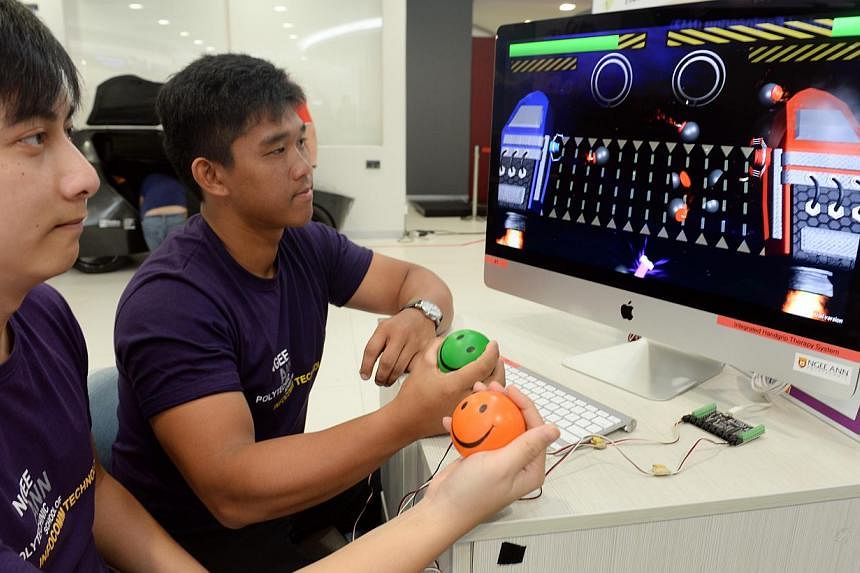SINGAPORE - Ngee Ann Polytechnic students will be showing off their technology-based solutions at the polytechnic's open house, which runs from Thursday to Saturday.
Here are some of the 56 projects that will be exhibited:
Sentinel Active Monitoring

This watch-like device, created by three biomedical engineering students, detects when an elderly person has a fall and alerts their caregiver via phone. The gizmo also allows the caregiver to monitor the elderly person's heart rate remotely.
iSurvive
Three electronic and computer engineering students have developed a wristband which can help workers in hazardous environments, such as shipyards and oil refineries in the event of a fire.
The device carries a tag that uses near field communication technology to identify the user. If a fire breaks out, the fleeing workers need only tap their wristband on panels at the emergency exits to alert the fire warden of their identify and location. The wristband also contains a compartment for a surgical mask.
Waste Heat Recovery

Three mechanical engineering students came up with a system that uses the waste heat generated by the air-conditioner to heat up water for showers. Running eight hours throughout the night, it can heat up enough water for four people to take a shower the following day. It would save households an estimated $240 per year in electricity bills.
Stress Ball Machine

This machine is meant to help stroke patients, as well as those recovering from hand-related injuries, as well as children with hand-eye coordination problems. It was created by four students from the Information Technology and Multimedia and Animation courses. The machine links stress balls with force-detection sensors to a computer, on which patients can play interactive games using the balls.


